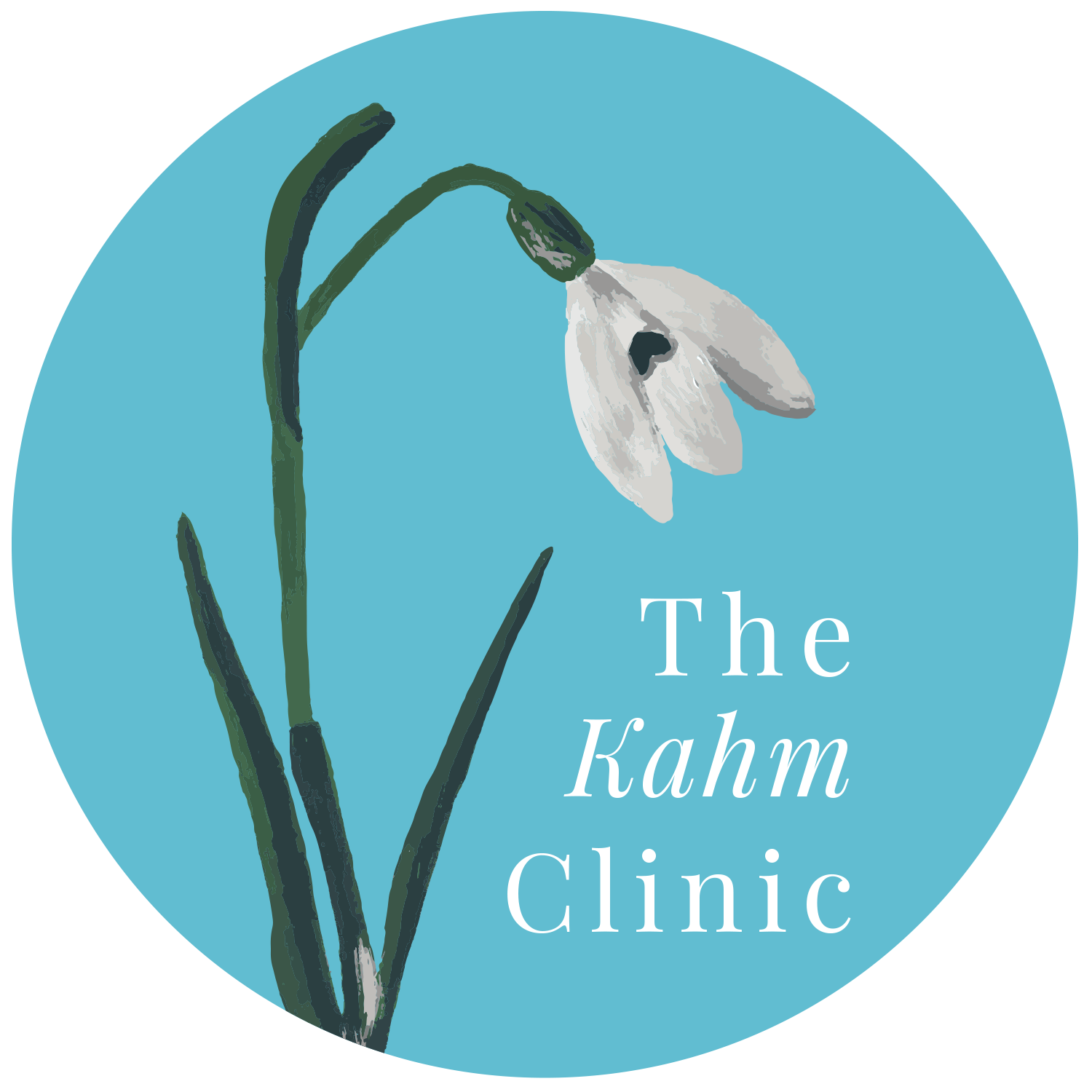Intuitive Eating
The Kahm Clinic is excited to welcome another friendly face to our YouTube channel! Michelle Ritter, MS, RDN, NASM L1 CPT is a dietitian based in Newton, Massachusetts. Read on for her research-based take on a popular topic: intuitive eating.
Intuitive Eating
Let’s start by defining intuitive eating. It is a non-diet approach with an evidence-based framework for healing your relationship to food and your body. The purpose is to move away from diet culture and restrictive, disordered eating practices. As Michelle explains, “The hope is to learn and understand that we can have a productive, meaningful, and more authentic relationship to food.” Ultimately, intuitive eating offers a more compassionate approach to eating, exercise, and body image.
The evidence-based framework means that intuitive eating has been researched and studied hundreds of times, proving its effectiveness. Through intuitive eating, people are able to improve their relationship to food and exercise, which correlates with higher self-esteem and body confidence as well as better long-term health outcomes, including lower body mass index (BMI) and fewer lifestyle-related diseases.
Common Misconceptions about Intuitive Eating
A lot of people think they understand intuitive eating without truly knowing the facts. The following ideas about intuitive eating are incorrect:
Intuitive eating is a diet: As explained above, intuitive eating is not a diet. If someone complains that intuitive eating “doesn’t work,” they’re often looking at it from a weight loss perspective. It’s important to note that it doesn’t always work for weight loss — because that’s not what it was intended to do!
Intuitive eating is just eating intuitively: In truth, intuitive eating is more complex than simply eating intuitively. Developed by Elyse Resch, MS, RD, FADA, CEDRD and Evelyn Tribole, MS, RD, authors of the popular book Intuitive Eating: A Revolutionary Program that Works, it’s meant to help people turn down the external factors of what we should and shouldn’t be eating, ultimately getting away from a diet mentality. It’s meant to turn up the internal cues, thoughts, and desires that guide our relationship with food, exercise, and body image.
Intuitive eating refers to eating when you’re hungry and stopping when you’re full: Although many people define intuitive eating in this way, it’s more than this straightforward explanation. For instance, sometimes, our hunger and fullness cues can be off and not aligned with meeting our metabolic needs. Michelle dives deeper into this idea in her recent YouTube video about Set Point Theory.
Who Should Practice Intuitive Eating?
Intuitive eating is not a good fit for everyone. To get the most out of this non-diet approach, you must trust that your body will give you consistent, persistent food signals. You need to be ready to ditch diet culture, including weighing yourself, counting your calorie intake, and more. Additionally, if you’re struggling with disordered eating behaviors or an eating disorder, intuitive eating won’t work.
If you’re not ready for intuitive eating, don’t worry! Our team at The Kahm Clinic can help you calibrate an appropriate recovery plan. You can learn to understand what your body needs to function at its best. Once you build a strong foundation of knowledge and better recognize your hunger and fullness cues, intuitive eating becomes a natural next step in your journey.
Check out The Kahm Clinic’s YouTube channel for more insightful videos from our team!
To talk to a professional about whether or not intuitive eating is the right fit for you, please schedule an appointment at The Kahm Clinic.
